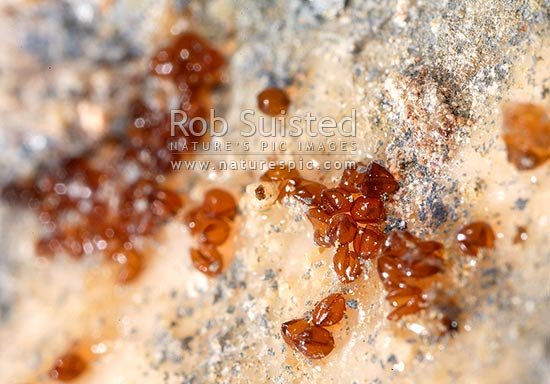
Glow worms, particularly the species known as *Lampyridae*, are fireflies in their larval stage. They create a soft, ambient glow using bioluminescence, which might remind you of stars sparkling in the night sky. When you see those glow worm eggs, tucked away in a cozy nook, it’s like peeking into a secret universe. Let’s delve into how to identify these eggs and ensure their well-being as they grow.
What Are Glow Worm Eggs?
Glow worm eggs are the embryonic stages of these luminous insects, primarily belonging to the family *Lampyridae*. These tiny eggs are often found in moist, dark places, like damp soil or debris. They resemble tiny pearls, usually white or pale yellow, and are about the size of a pinhead. Once you recognize them, you’ll see how easy it is to spot them if you know what you’re looking for.
When females lay eggs, they typically do so in clusters. This is their way of protecting the eggs from predators and environmental hazards. Each glow worm will eventually emerge as a larva that mirrors the adult’s bioluminescent charm. The time taken for the eggs to hatch can range from a few weeks to several months, depending on the environment and temperature. So, keeping an eye on them is both exciting and important!
How to Identify Glow Worm Eggs
Identifying glow worm eggs might seem challenging at first, but a few key traits can help you with this task. First, look for their distinct oval shape and shiny surface. They tend to cluster together, so spotting one might lead you to several others.
Another great tip is to examine the location. You’ll often find these eggs in moist and shaded areas, like under leaves or in crevices. If you’re out exploring nature, keep an eye out for places that seem dark and humid. Here’s what to look for:
- Color: Glow worm eggs are usually pale or translucent.
- Size: Each egg is roughly 1 to 2 millimeters in diameter.
- Location: Look in damp, dark areas, particularly near water sources.
- Cluster: They often appear in small groups rather than alone.
After you start spotting them, identifying glow worm eggs becomes a delightful scavenger hunt! Remember, be gentle when looking, as they’re delicate little treasures.
Caring for Glow Worm Eggs
Now that you’ve found some glow worm eggs, you might wonder how to care for them. It’s a bit like nurturing a plant; they need the right conditions to thrive. If you plan to keep the eggs, here’s what you need to consider:
1. Temperature and Humidity: Glow worm eggs thrive in environments that mimic their natural habitat. Keep them in a cool place, ideally between 60-70°F (15-21°C). Humidity is also crucial—too dry, and they might shrivel; too wet, and they could mold.
2. Light Exposure: These eggs prefer darkness, as they’re naturally found in shaded areas. Avoid direct sunlight, which can be too harsh for them. A shaded container helps to maintain their comfort.
3. Feeding Options: Once the eggs hatch into larvae, they’ll need a source of food. Glow worm larvae typically feast on small insects. A gentle misting of the environment can keep things moist, which is beneficial as they grow.
If you keep these conditions in check, you’ll be well on your way to nurturing your little glowing friends through their early life stages!
Common Problems and Solutions
As with any caregiving endeavor, you may run into some bumps along the road. Here are a few common problems you might encounter with glow worm eggs or larvae, along with some solutions:
- Dryness: If you notice the eggs looking shriveled, it’s a sign they need more humidity. Consider misting the area lightly.
- Overcrowding: If the eggs are clustered too tightly, they might not get enough oxygen. If you’re caring for them in a container, ensure it’s not too packed.
- Mold Growth: Overly wet conditions can lead to mold. If you see any, it’s crucial to address this quickly by improving air circulation and reducing moisture.
Monitoring these factors will help you ensure a healthy environment for the glow worms as they mature.
What to Expect After Hatching
Once your glow worm eggs have hatched, the real excitement begins! The larvae will emerge and start their journey as tiny, glowing creatures. At this stage, they resemble small worms with a glow at their tails, which is their way of attracting prey. It’s a fascinating transformation from egg to luminescent larva!
While the larvae are active, they’ll begin to hunt for food. Providing a suitable diet will significantly aid their growth. Typically, they feed on small insects like fruit flies or spiders. You can find these easily, or consider letting them loose into a natural habitat.
As they grow, they’ll eventually turn into pupae, before emerging as adult glow worms. This whole process can take several months. So, while it requires patience, witnessing the transformation is entirely worth the wait!
Caring for glow worm eggs and watching them grow can be a mesmerizing experience. They serve as a reminder of nature’s beauty and extraordinary life cycles. Whether you’re a budding entomologist, a curious nature lover, or simply drawn to the magic of their glow, looking after these eggs can be both rewarding and educational.
Just remember the key elements: keep the environment right, provide food when needed, and cherish the moments of growth. Watching those tiny eggs hatch into glowing beings is a little like seeing stars come alive in your very own backyard. So, embrace the journey, and enjoy the glow!
